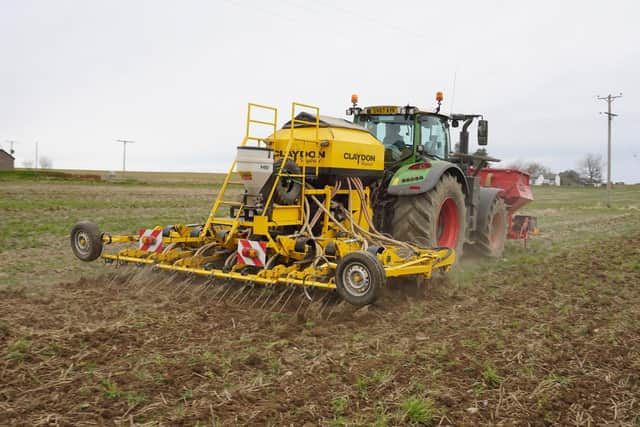Farmers aiming to reap benefits from parking up plough


For centuries ploughing – or ‘inversion tillage’ – has been adopted by farmers due to its ability to consistently encourage uniform crop establishment, come rain or shine.
However, with a whole host of environmental and economic benefits currently being widely claimed for dropping this age-old practice, a group of like-minded farmers working under the Farming for a Better Climate initiative have been looking at ways of minimising soil disturbance and moving away from ploughing.
Advertisement
Hide AdAdvertisement
Hide AdBut those involved in the project, which is overseen by SAC Consulting, have seen their efforts challenged by strong changes in weather and rainfall patterns during spring sowing – from blisteringly dry winds to prolonged wet periods.
“Reducing tillage is often framed as one of the biggest changes arable agriculture can make to improve its environmental footprint,” said Zach Reilly from SAC Consulting, who facilitates the group, “but it’s sometimes far from straightforward.”
“There is no one-size-fits-all approach, and it takes a bold person to cut it out altogether. However, there are a few tips to give it a try, and these can centre around the existing farm rotation.”
He said that the first step towards reducing tillage was to evaluate what cultivation was currently used and – why it was performed: “For example, if the field is subsoiled, have you checked for compaction below the usual cultivation depth? Taking a spade out into a field and having a dig is a hugely valuable way to assess soil structure and reduce unnecessary tillage.”
Reilly said that using break crops which didn’t always require the same soil preparation as a cereal crop was a good first step: “Oilseed rape and beans both thrive from being established behind a tine,” he said. “This allows the roots to penetrate deep into the soil and support healthy plants. Using a crop such as oilseed rape can give the field a break from inversion tillage and can also leave the soil in good health for the following cereal to be established in a reduced tillage system.”
With more contractors now having min and zero till equipment, he said that it was easy to try the approach without having to find the upfront capital for new machinery.
Accepting that reducing tillage could lead to patchy emergence, grass weed accumulation and compaction, Reilly however maintained the approach had a number of economic and environmental paybacks.
One of the biggest benefits claimed for cutting out ploughing was the protection afforded to the soil surface by the residue of the previous crop, an approach which was also good for earthworm numbers and beneficial fungi.
Advertisement
Hide AdAdvertisement
Hide AdCutting out ploughing could also reduce fixed costs by cutting out a labour and machinery-intensive process while also offering the opportunity to improve the timeliness of sowing.
Reducing tillage could also reduce a farm’s total emission by lowering diesel use and preventing the erosion of soil carbon through mineralisation.
Comments
Want to join the conversation? Please or to comment on this article.